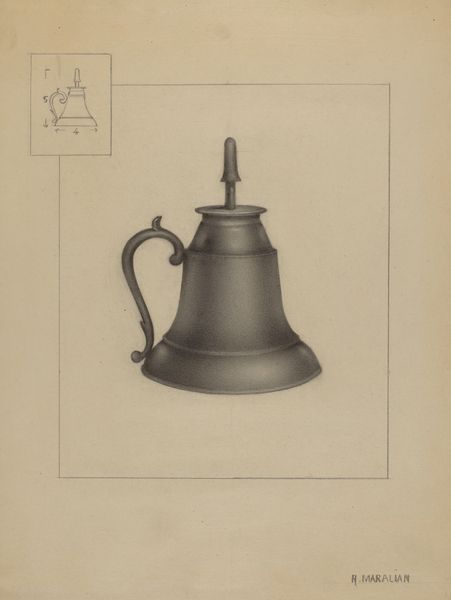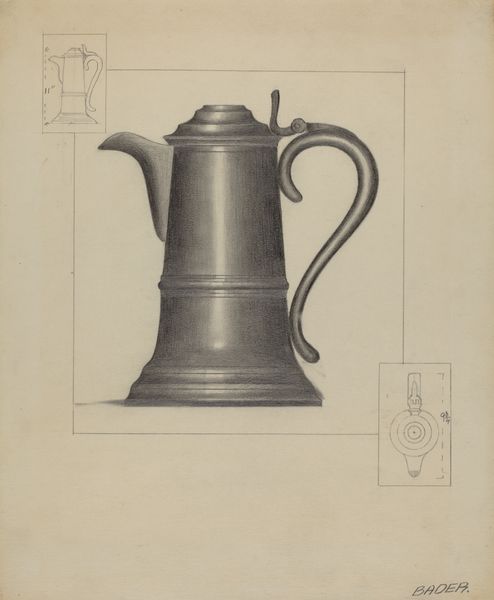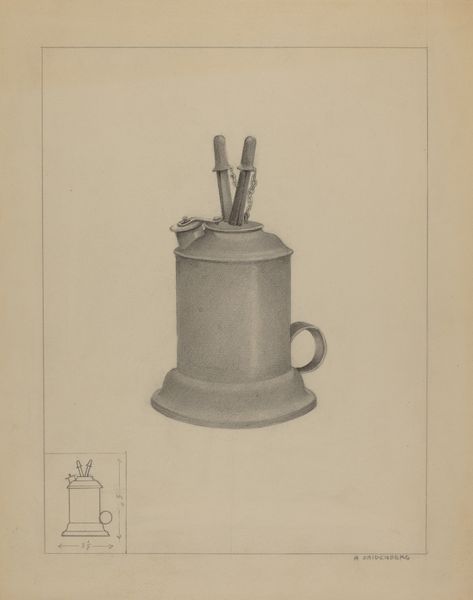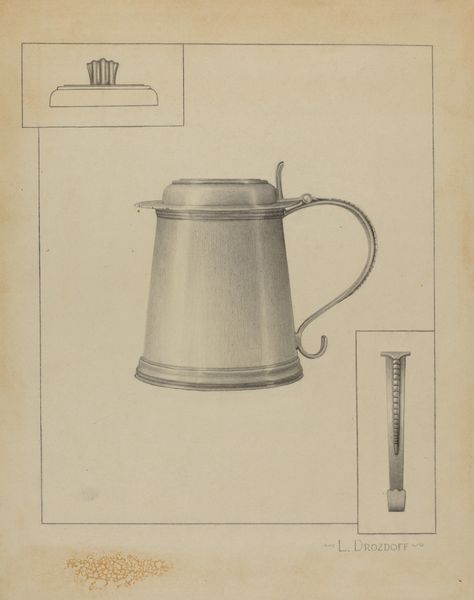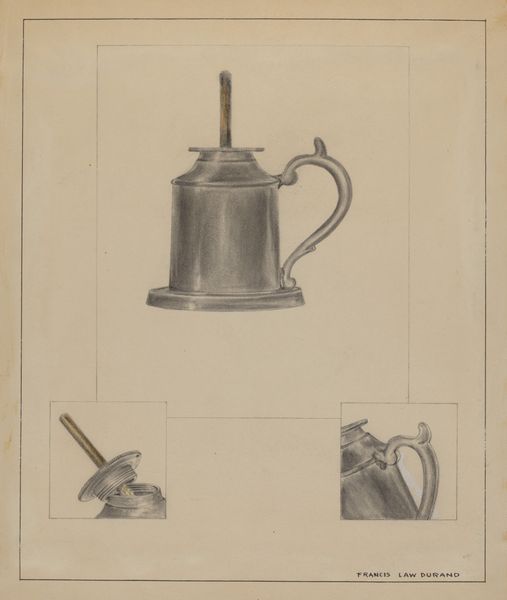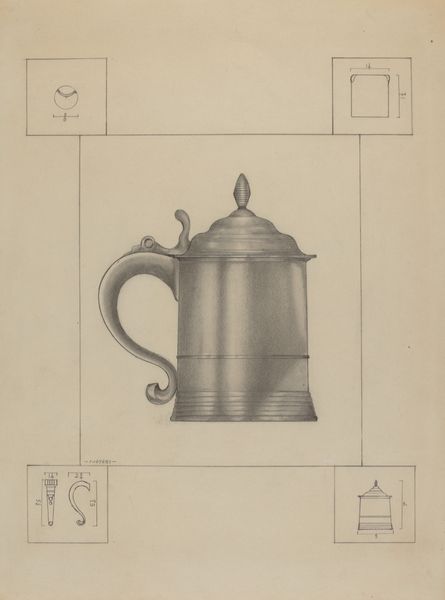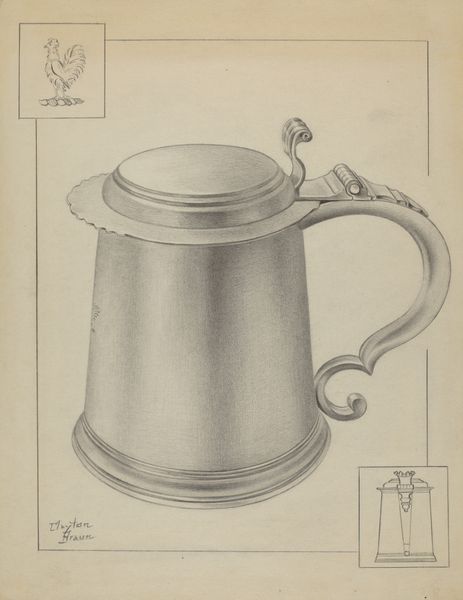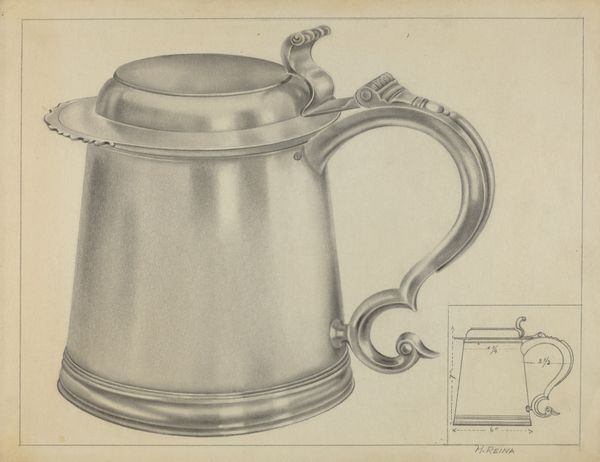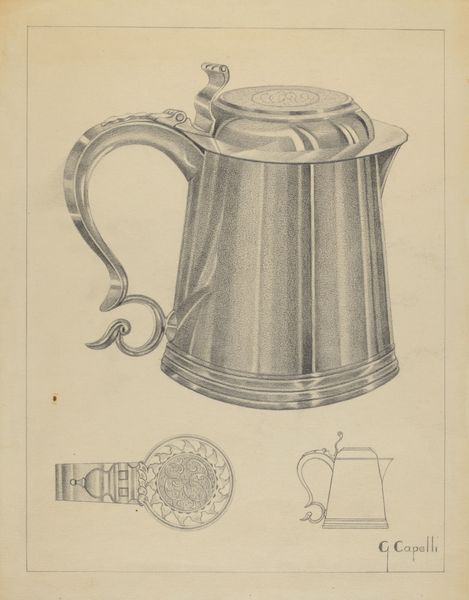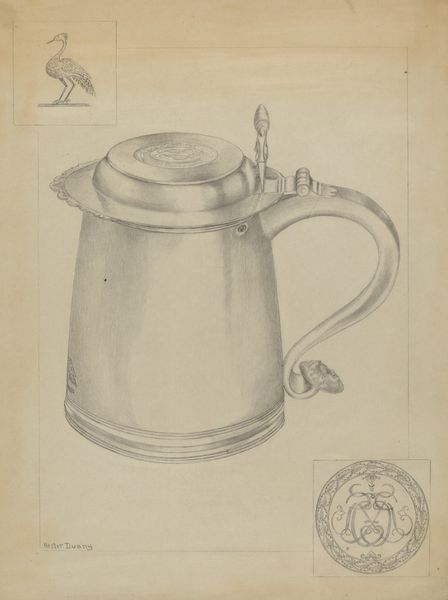
drawing, paper, pencil
#
drawing
#
paper
#
pencil
#
realism
Dimensions: overall: 29.4 x 22.9 cm (11 9/16 x 9 in.) Original IAD Object: 4" high; 2 3/4" wide
Copyright: National Gallery of Art: CC0 1.0
Editor: Here we have A. Zaidenberg's "Spark Lamp," a pencil drawing on paper from around 1936. There’s a quiet formality to it, almost technical. How do you interpret this work? Curator: That's a perceptive observation! It’s crucial to consider the context of the 1930s. We can ask, what purpose does this image fulfill? A detailed rendering of an object like this reflects an engagement with labor and manufacturing. Given Zaidenberg's background, the "Spark Lamp" potentially carries symbolic weight. It also evokes a strong relationship to domestic life, with a distinct gendered dimension. What statement might Zaidenberg be making through it? Editor: I see what you mean about labor, especially because the drawing itself seems to require careful labor to create! Could it simply be an appreciation of everyday technology? Curator: It certainly gestures towards that. But, as scholars, we must dig deeper. The very act of meticulously rendering a commonplace object elevates it, drawing our attention to its construction, its utility, and, importantly, its accessibility (or lack thereof) to different segments of society at the time. The presence of a smaller drawing depicting its measures might mean the illustration was done with functional purposes. Also, does the spark lamp have connections with historical figures who championed the cause of the worker class? Editor: That's fascinating; it gives me so much to consider! Thanks, I've never really thought about art in relation to labor like this. Curator: Exactly! Art opens conversations, makes connections, and reveals so much more when examined with social and historical lenses. This detailed exploration has changed the way I look at functional design.
Comments
No comments
Be the first to comment and join the conversation on the ultimate creative platform.
